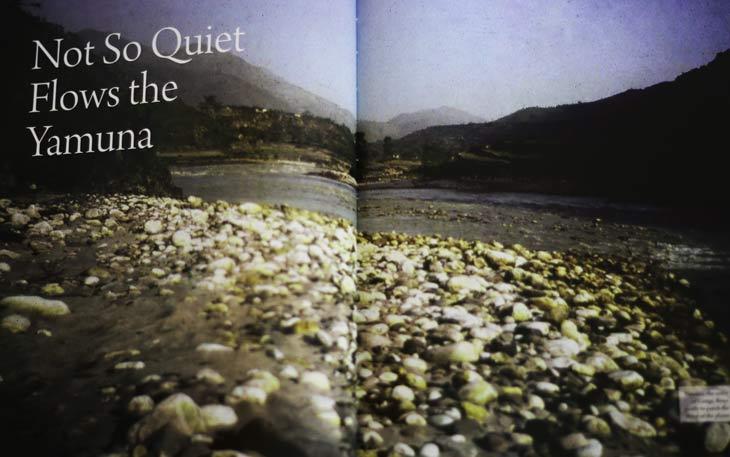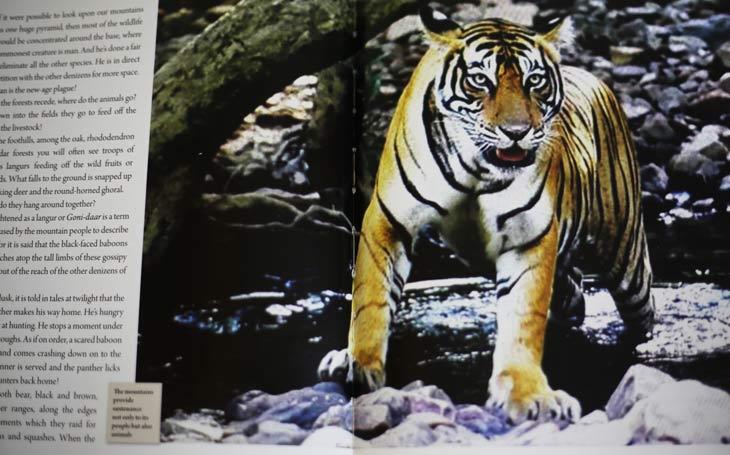Wanderings Through The Garhwal Himalaya – A concise compendium on the abode of the gods
_83157_730x419-m.jpg)
Title: Wanderings Through The Garhwal Himalaya
Author: Ganesh Saili
Niyogi Books
Rs 750
Each year, lakhs of tourists flock to the Garhwal region in Uttarakhand to explore its icy Himalayan peaks, glaciers, remote valleys, dense forests and the pristine rivers that meander through it. Also known as the abode of the gods, the region that has become a hotbed for both religious, as well as adventure and nature tourism.
Despite this, precious little is known about this majestic region. It is for this reason that Ganesh Saili's new book, Wandering Through The Garhwal Himalaya, makes for such an interesting read. In vivid detail, the book tells the story of the Garhwal Himalayas – how they have always been much more than lumps of rock and ice, enigmas that serve as constant companions for travellers and explorers.
A delightful collections of introspective essays about the Garhwal Himalayas, Saili draws on his memories of being brought up in mountains, while bringing to life each of his memories with both clarity and anecdotal evidence.
The abode of the gods

Much before the advent of motorised vehicles, wise men from the east, sages, poets, mystics and travellers walked for months in this natural paradise in order to reach the Himalayas, a source of attraction since time immemorial.
Far away from the madness of the urban life, travellers from the plains felt intimidated by these mighty peaks that dwarf everything else around them. It is for this very reason that most of these icy peaks in the region are revered as gods, rather than just another mountain range.
For the ordinary hill folk dwelling in this harsh terrain, these are no ordinary mountains. They believe that all hell will break lose if these mountains unleash their fury. The enigma of these mountains continue to charm those who are brave enough to venture into these areas where, as Saili so eloquently says, “Nature triumphs over puny machinations of men”.
In fact, one of my favourite chapters in the book is 'Travels with the Four-Horned Ram', where the writer narrates how King Yashdhawal met his doom 600 years ago. The monarch's insistance on taking nautch girls with him for the highly-revered Nanda Devi Raj Jaat Yatra led to the death of the king and his entourage.
In this chapter, Saili retraces the origin of hundreds of human skeletons found at the edge of Roopkund lake at an altitude of 16,499 feet. Organised once in 12 years, the three week long yatra begins from a small village near Karnprayag and goes up to Roopkund and Homkund with a four-horned ram.
Similarly, Saili shares innumerable legends of the Himalayas, and how they have shaped the beliefs, customs and culture of its inhabitants. He highlights how Garhwal is the custodian of pilgrimage destinations in ecologically fragile zones, and how they should be protected from the ham-fistedness of our policy-makers.
A lesson in natural history
What stands out in the book are the several references to the region by historians, dating back to the rule of the Raj. These icy peaks mesmerised the British explorers with their sheer vastness and beauty.
With unmissable affection, Saili writes of his many journeys through these mist-wrapped valleys. His travelogues weave details of natural history into the delicate social fabric of mountain life.
The book is a tribute to the ordinary mountain folk who have paid a heavy price living in these hostile conditions, yet continue to sport a smile despite nature's hostility. Legendary British explorer, Frank Smythe, who is credited with discovering the Valley of Flowers, has been quoted by Saili when talking about the people of Garhwal.

Smythe in his 1931 classic, The Valley of Flowers, wrote: “I met a true civilization, for I found contentment and happiness. I saw a life that is not enslaved by the time factor; that is not obsessed by the idea that happiness is dependent on money and materials.” Much of what he said still remains true.
In a chapter on the Baadis, the songsters of Garhwal, who the writer prefers to call as the gypsies or the “flower children of the 1960s”, he tells how the ancient tradition is slowly dying in the region.
From Haridwar to Mana, the last village on the Indian side before Tibet, Saili offers great insights into the region, its history, the resilience and sheer simplicity of its people, tourist destinations, flora and fauna and much more. It is a great companion for anyone visiting the region as one would only emerge wiser after reading this.
“I believe that going to the Himalaya or even living there for a short time furthers one's development more than visiting holy men. But most folks cannot stay in these mountains for too long. The energy is too pure, too intense,” writes Saili.







![BJP's Kapil Mishra recreates Shankar Mahadevan’s ‘Breathless’ song to highlight Delhi pollution [WATCH] BJP's Kapil Mishra recreates Shankar Mahadevan’s ‘Breathless’ song to highlight Delhi pollution [WATCH]](https://images.catchnews.com/upload/2022/11/03/kapil-mishra_240884_300x172.png)

![Anupam Kher shares pictures of his toned body on 67th birthday [MUST SEE] Anupam Kher shares pictures of his toned body on 67th birthday [MUST SEE]](https://images.catchnews.com/upload/2022/03/07/Anupam_kher_231145_300x172.jpg)






